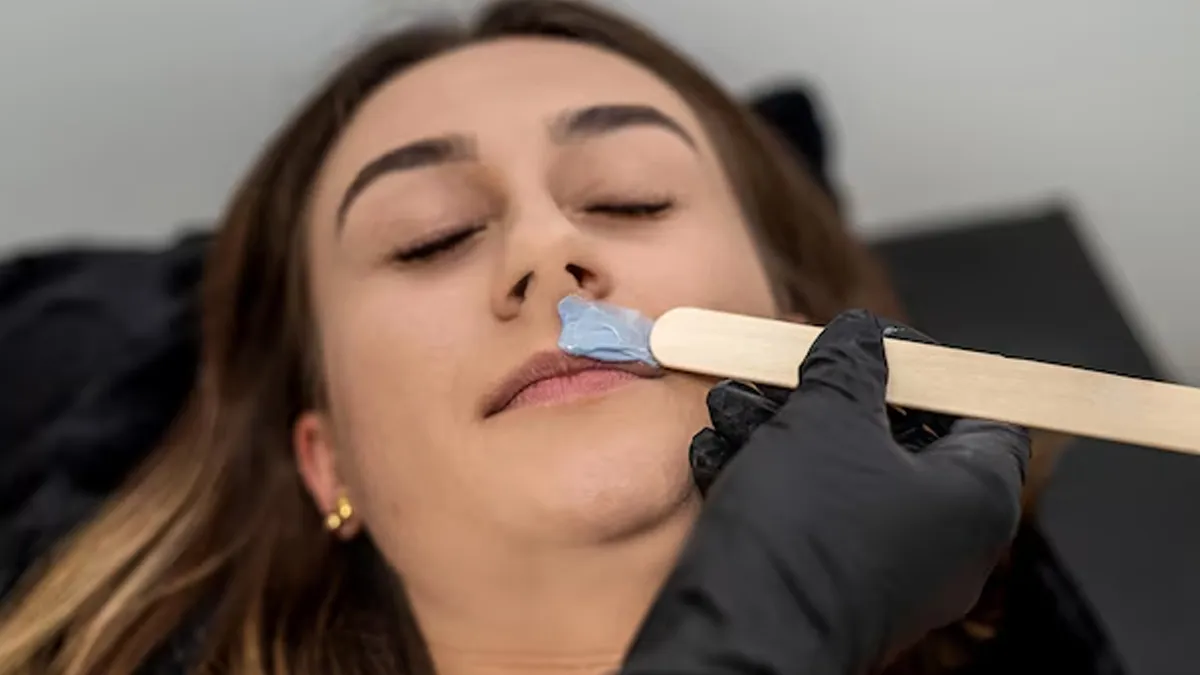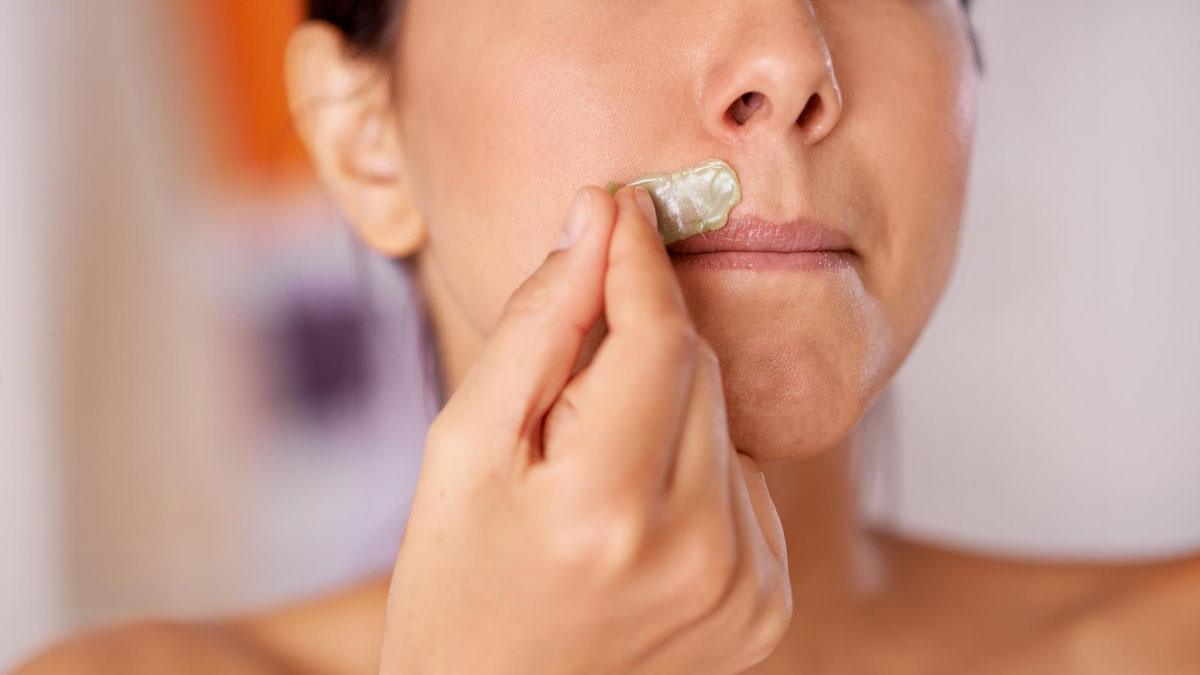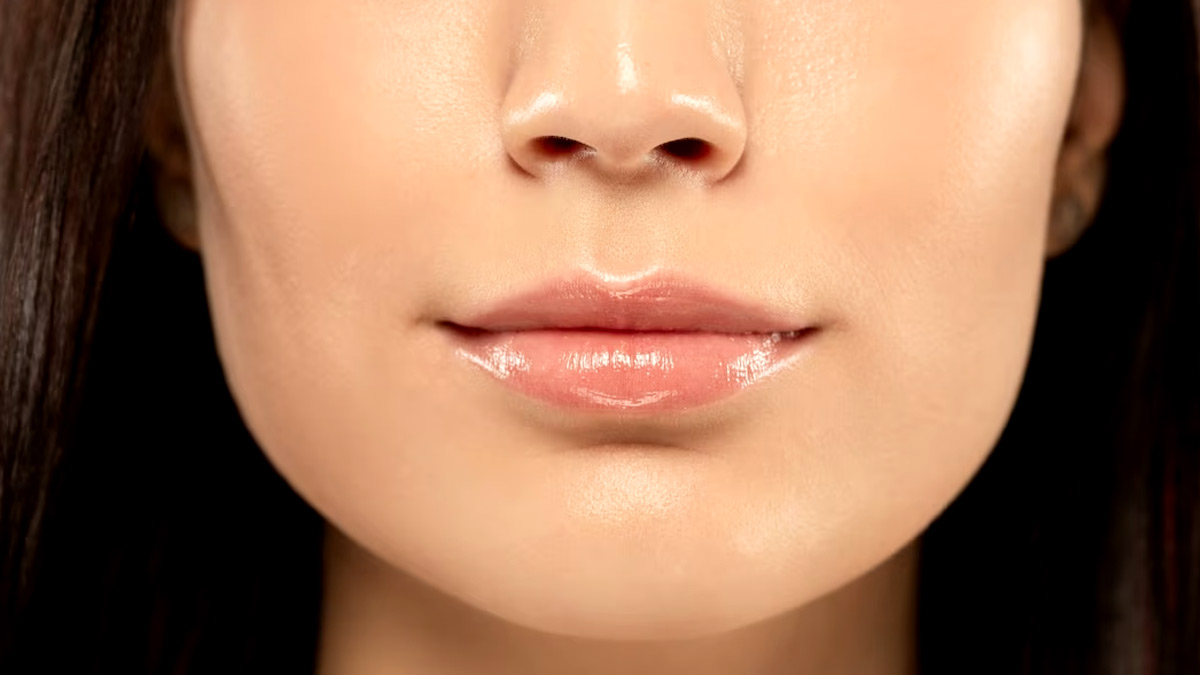
The desire for silky, hairless skin frequently sends most people to the fast and efficient option of upper lip waxing. With its instant gratification, however, the usual and worrying question remains if upper lip waxing leads to pigmentation? The short response is yes, it can. But knowing why it occurs and how to avoid it is the key to having an even-toned complexion
Table of Content:-
In an exclusive interaction with the editorial team of Onlymyhealth, Dr Sanjeev Gulati, Dermatologist, Department of Dermatology, Sharda Hospital, Noida, explained that the main reason waxing may cause pigmentation is a process known as Post-Inflammatory Hyperpigmentation (PIH). It's not the wax itself, but the way your skin reacts to the inflammation or trauma from the waxing procedure. This is how it goes down:
1. Trauma to the Skin
As you wax, hair is removed from their follicles. This is a frequent action that may be causing a small trauma to the sensitive skin on your top lip.
2. Inflammatory Response
Due to this trauma, your immune system within your skin gets activated, resulting in inflammation. This usually appears as redness and minor swelling after waxing.
3. Melanin Overproduction
In the course of the healing process, and occasionally as a reaction to the inflammation, specialised cells referred to as melanocytes (which are in charge of producing melanin, the coloring material responsible for skin colour) become overactive.

Also Read: How To Perform A Nasal Rinse Properly And Mistakes To Avoid
4. Dark Spots Appear
This excess melanin then accumulates in the skin's superficial layers, causing darker patches or spots to appear – the feared pigmentation.
Who is More Vulnerable?
Dr Gulati suggested that though anyone can develop PIH after waxing, some people are more likely to do so:
- Those with darker skin tones
- Those who get hyperpigmentation easily
- Individuals with sensitive skin
- Individuals on specific medications
- Faulty waxing procedures
How to Help Prevent the Risk of Pigmentation
There are some things you can do that will substantially lower the risk of getting pigmentation from upper lip waxing:
1. Select a Qualified Professional
This is most important. A competent esthetician will apply the proper type of wax for your skin, properly prepare the skin, and utilize techniques that cause least trauma.
2. Discuss Your Concerns
Explain your skin's sensitivity or pigmentation history to your esthetician. They will then tailor their treatment accordingly.
3. Patch Test
If you're new to waxing or trying a new salon, consider a patch test on a small, inconspicuous area of skin 24-48 hours beforehand to gauge your skin's reaction.
4. Avoid Sun Exposure Before and After
Sun exposure can exacerbate PIH. Avoid direct sunlight for at least 24-48 hours before and after waxing. Always wear a broad-spectrum sunscreen.
5. Stop Using Certain Products
Avoid the use of retinoids, alpha hydroxy acids (AHAs), beta hydroxy acids (BHAs), and other exfoliating products for a minimum period of 5-7 days prior to waxing because they cause thinning of the skin and make it susceptible.

Importance of Gentle Upper Lip Aftercare
- Soothe Immediately: Use a cool compress or an aloe vera gel to soothe the skin and minimize inflammation immediately after waxing.
- Moisturise: Maintain the waxed skin well-moisturized with a light, unfragranced moisturizer.
- Stay Away from Irritants: Stay away from rough cleansers, scented products, and makeup for a few hours after waxing.
- Sun Protection is a Must: This is the most important step to avoid darkening of PIH. Apply a high-SPF (30+) broad-spectrum sunscreen every day on your upper lip, even on cloudy days. Reapply every two hours, particularly if you perspire or swim.
- Try Alternatives if Sensitive: If you always get pigmentation even after taking all precautions, then it is time to consider different hair removal options such as:
- Threading: It's an old method where hair is taken out using a thread of cotton, usually giving less irritation than waxing.
- Dermaplaning: Though mainly an exfoliant, it also removes vellus (peach fuzz) hair, which is an excellent choice for a silky upper lip.
- Laser Hair Removal: For a more permanent method, laser hair removal can significantly reduce hair growth and, if performed by an expert technician, may be less likely to cause PIH than waxing in the long run.
Bottomline
Upper lip waxing may lead to pigmentation, in the form of post-inflammatory hyperpigmentation most notably. But by becoming aware of the processes involved and taking a scrupulous approach to care before and after waxing, you can largely reduce your risk. Taking sun protection as a priority and seeking professional advice in the event of pigmentation are your best friends in keeping skin even and clear. Remember that healthy skin equals beautiful skin, and sometimes that means looking into the best hair-removal technique for your specific skin tone.
Also watch this video
How we keep this article up to date:
We work with experts and keep a close eye on the latest in health and wellness. Whenever there is a new research or helpful information, we update our articles with accurate and useful advice.
Current Version
